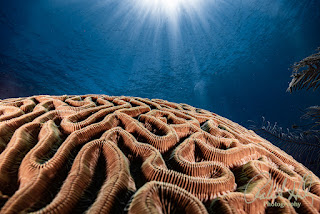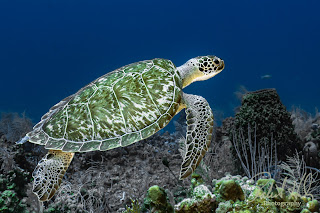How to Use Color Grading Wheels for Dramatic Underwater Effects
Have you ever taken a moment to scroll through your underwater dive photos and felt a twinge of disappointment, thinking, "It's good, but it doesn't quite capture the drama and emotion I felt underwater"? If so, you're certainly not alone.
Many passionate divers and photographers find themselves stuck on fixing exposure and white balance in Lightroom, thinking they've done all they can. But here's a helpful tip: there's an often-overlooked creative tool that can truly elevate your photos—it's called the Color Grading Wheels.
These wheels are designed to give you the power to inject mood, atmosphere, and cinematic punch into your images, transforming good photos into stunning visual stories. Whether you're aiming for a cool, mysterious vibe or a warm, inviting scene, the Color Grading Wheels are your secret weapon for making your underwater photography stand out. Don't miss out on mastering this versatile feature to bring your dive photos to the next level.
Why This Matters for Oceanic Explorers
Most underwater photographers rely on the basic sliders - temperature, tint, and saturation - when editing their images. While these adjustments are essential, they primarily serve to correct color issues and bring your photos closer to true-to-life hues.
However, for those looking to elevate their images and truly convey the mood of a scene, the Color Grading panel in Lightroom offers powerful tools that go far beyond simple correction.
This feature enables you to craft the atmosphere of your shot by adding targeted tints to the shadows, midtones, and highlights, allowing for a more nuanced and artistic approach to color.
Where to Find the Color Grading Panel
-
Lightroom Classic (v14.5.1): Develop Module → Scroll down to Color Grading
-
Lightroom (Desktop v8.5.1): Edit Panel → Color → Color Grading
-
Lightroom Mobile (iOS v10.5 / Android v10.5.2): Open a photo → Color → Color Grading
📌 Keyboard Shortcut (Desktop): Press Ctrl+Alt+Shift+7 (Win) or Cmd+Option+Shift+7 (Mac) to jump directly to Color Grading in Classic.
Step-by-Step: How to Use Color Grading for Underwater Photos
1. Start with a Neutral Edit
Before adding color grades:
-
Correct exposure, white balance, and lens profile.
-
Reduce backscatter using Spot Removal (
Qin Classic). -
Apply AI Denoise if needed (
Ctrl+Shift+D).
This gives you a clean, balanced foundation, so your grades enhance, not fight, the base tones.
2. Understand the Three Wheels
-
Shadows Wheel: Affects the darkest parts (wreck interiors, cavern walls, deep water).
-
Midtones Wheel: Targets the middle values (fish, divers, coral).
-
Highlights Wheel: Impacts the brightest tones (sunbursts, bubbles, sand).
💡 Tip: Start with Shadows + Highlights first, then fine-tune Midtones.
3. Add Drama with Shadows
-
Drag the Shadows wheel toward blue or teal for wrecks and deepwater.
-
Use purple/magenta shadows for surreal or artistic looks.
Example: An Old wreck at 30m.
-
Shadows wheel → Blue (Hue 220, Sat 20).
-
Balance slider → -20 (emphasizes shadow tint).
-
Result: Cold, moody steel tones that evoke a cinematic feel.
4. Warm Up the Sunlight with Highlights
-
Push the Highlights wheel toward gold/orange to simulate sunlight piercing through.
-
Works beautifully on reef shots with sunbeams.
Example: Sunrays over a coral garden.
-
Highlights wheel → Orange (Hue 40, Sat 25).
-
Midtones left neutral.
-
Result: Golden shafts of light contrasting against cooler water shadows.
5. Fine-Tune the Midtones
-
Use sparingly: this controls fish, divers, and reef tones.
-
A slight warm boost makes skin look natural.
-
A cooler push makes marine life feel otherworldly.
Example: Diver portrait at 15m.
-
Midtones wheel → Slight warm tint (Hue 30, Sat 10).
-
Shadows wheel → Teal.
-
Result: Diver stands out warmly against a cooler water background.
6. Control the Balance
At the bottom of the panel is the Balance slider.
-
Move left = favors Shadows tint.
-
Move right = favors Highlights tint.
Think of it as your mood dial:
-
Left = mysterious, dramatic.
-
Right = uplifting, glowing.
7. Adjust Global Wheel (Optional)
The Global wheel lets you add an overall tint.
-
Use carefully, small shifts (+5 to +10 saturation) unify your look.
-
Example: A slight aqua global tint for blue-water cohesion.
Example Workflows in Action
Example 1: Cinematic Wreck Dive
-
Shadows: Blue (Hue 220, Sat 25).
-
Highlights: Neutral.
-
Midtones: Slight desaturation.
-
Global: None.
➡ Result: Stark, moody atmosphere perfect for wreck storytelling.
Example 2: Golden Sunrays on Reef
-
Highlights: Orange (Hue 35, Sat 30).
-
Shadows: Teal (Hue 200, Sat 20).
-
Midtones: Neutral.
-
Balance: +20 (favoring warm highlights).
➡ Result: Reef feels alive with warm light, water stays cool.
Example 3: Deep Blue Abyss (Shark Encounter)
-
Shadows: Navy Blue (Hue 240, Sat 30).
-
Midtones: Slight teal boost.
-
Highlights: Slight cool shift.
➡ Result: Foreboding, powerful scene amplifying the shark's dominance.
Tool & Compatibility Chart
| Workflow Step | Lr Mobile (10.5) | Lr Cloud (8.5.1) | Lr Classic (14.5.1) | ACR / Ps (17.5 / 26.10) | Formats Supported |
|---|---|---|---|---|---|
| Color Grading Wheels | ✅ | ✅ | ✅ | ✅ | RAW, DNG, JPEG, HEIC, TIFF, PSD |
| Global Wheel | ✅ | ✅ | ✅ | ✅ | All formats |
| Balance Slider | ✅ | ✅ | ✅ | ✅ | All formats |
| Sync Across Devices | ✅ | ✅ | ✅ | ✅ | All formats |
Pro Tips for Oceanic Explorers
-
Use Reset (Double-Click): Double-click the wheel or slider name to reset instantly.
-
Keyboard Precision: Hold
Shiftwhile dragging a wheel for finer control. -
Snapshot Your Looks: In Classic, press
Ctrl+N(Cmd+NMac) to create snapshots of different moods. -
Stack with Masks: Apply Color Grading only to a Subject Mask (fish, diver) for surreal creative effects.
-
Combine with Curves: A gentle S-curve before grading amplifies mood without crushing detail.
Why Color Grading Is Worth Your Time
Color Grading isn't just about "making it pretty." It's about storytelling.
-
A wreck can feel haunting.
-
A reef can feel inviting.
-
A shark encounter can feel menacing.
When you, as the editor, apply color with intent, your photos stop being snapshots; they become narratives.
Wrap-Up & Next Steps
Oceanic Explorers, don't stop at just adjusting sliders; dive deeper into the world of color grading. The Color Grading Wheels are an essential tool that opens up a whole realm of underwater storytelling possibilities. They allow you to translate the vivid emotions and sensations you experienced during your dive into stunning visual narratives that captivate your audience.
By mastering these wheels, you can enhance the mood, highlight crucial details, and convey the beauty of the underwater world with clarity and professionalism.
Whether you're creating content for educational purposes, documentaries, or personal projects, the Color Grading Wheels help ensure your visuals truly reflect the awe-inspiring experience beneath the waves.
📌 Full tutorial available here 👉 Robert Herb Blog
📌 Grab my free guide 🎁 "10 Lightroom Fixes Every Underwater Photographer Should Know" → info.robertherb.com/lm-3
📌 Share your before/after edits with #RobertHerbPhotography
Until next time—dive smart, shoot sharp, and edit with intention.
— Bob Herb 📷
🧭 What's Next?
🟦 Have you tried any of these techniques yet? Share your edits using #RobertHerbPhotography.
🟦 Want to see these workflows in action? Sign up for my upcoming training course at RobertHerb.com or reach out at bob@robertherb.com
🟦 And don't forget—new blogs drop weekly at Robert Herb Photography Blog
Written by Robert Herb – Empowering underwater photographers to capture and enhance the beauty of our oceans since 1978
Stay tuned for more in-depth insights into underwater photography. Let's dive deeper into the art and craft of capturing the marine world! If you have any comments or suggestions, I'd love to hear them.
Get ready for an exciting underwater photography adventure! For more details on my upcoming online training course, check out my "Training" page at RobertHerb.com or email me at bob@robertherb.com.
Sincerely,
Bob Herb
|
|





Comments
Post a Comment
Please let me know your comments.